Posts in Category: Japan 2025
Tiara Girls in Shibuya Scramble
Smartphones and Social Media: Today’s Popular Photography
These days, everyone everywhere has a camera in their pocket. Smartphone cameras have filters, AI and editing tools that give everyone the ability to take a decent photograph. Publishing photos has also become effortless. Anyone can post their images publicly on social media platforms like Instagram, and image posts get feedback through “likes” and “comments”. This is satisfying and motivating. It is a fun way to share your images with a huge audience.
Social media gives people the motivation to take photographs and smartphone technology makes it easy. The result is that millions of personal documentary style photos are being published everyday. Photo based apps have become a worldwide tool for communication and self expression. But while casual social media snaps are by far the most common type of photography, there are still other types of photographs to consider: images that are able to draw and hold your attention, freezing unique and surprising moments in time. There is a kind of magic in them. They are rare and difficult to capture.
Because these types of photos are so elusive, netting them requires some planning and skill but mostly persistence and luck. Of the thousands of pictures I took on a recent trip to Japan and Korea, I managed to capture only one such image.
The 1/250th of a second miracle

1/250th of a second…that’s how much time is captured here. We are in a huge crowd of people swarming through Shibuya Scramble Crossing in Tokyo. I am quickly walking forward taking pictures from waist level without looking through my camera. The girls are walking quickly towards me headed in the opposite direction. For this fraction of a second, we are facing each other. We are less than 2 metres apart and my finger happens to push the camera shutter. We pass each other and the moment is gone. Forever. One fraction of a second before or after and it would not exist. It is pure luck.
The intimate angle, the fact that the image is in focus and exposed so well and the emotion on display coming together in this tiny moment is almost a miracle. To put it into context, I tried the same technique in the same crosswalk for over two hours and took over 400 pictures. Out of 400 shots, maybe 6 or 7 were usable. Of those few, this was the only one that stood out as something truly special. It made the whole process worthwhile and went beyond all my expectations. It is one of my favourite pictures that I have ever taken.
What sets this image apart?
Emotion.
Photographs that express strong emotion are the ones that draw me in . And, the most captivating images are candid photos, where the emotion is pure and unaffected, where the subject has no sense that they are being photographed.
Tiara Girls in Shibuya Scramble glows with the energy of youth: freedom, rebellion, optimism are all on display. School uniform collars are unbuttoned and ties are pulled loose. Determined eyes are gazing directly and fearlessly into the future.
The princess tiaras, the body language and the smiles on their faces hint at the kind of friendship that can only bloom when you are young and free and open hearted. It makes me think of this short story passage:
“The most important people turned up surprisingly early in life. After a certain point, she found it difficult to turn even the first page of relationships that her younger self would’ve entered with relative ease. People locked their hearts at some point in their lives, as if everyone had agreed to do so. Then they made acquaintances outside those locks, with people who would never hurt them or be hurt by them”. Choi Eunyoung “Sister, My Little Soonae”
Some of our closest and most impactful friendships are forged when we are very young: before we have had our hearts bruised enough times to start hiding them away from others. This photograph captures that time.

Candid photography and telephoto lenses (spy photography)
Are there easier ways to get this kind of picture? Why not just sit up on a staircase above the crossing with a long lens and fire away..like taking bird pictures? The answer is that if you are not down in the crowd using a lens that is close to human vision perspective, you will not capture the kind of emotion that you see here. It just won’t work. The photos will look like spy camera photos, flat and lifeless. Kind of like when they show snaps of cop surveillance photos on tv shows. You need to be inside the image. When you are photographing from a distance, the photo will feel distant.
Check out my original post about Shibuya Scramble Crossing if want to see a few more pictures from this day.
If you have any questions or comments, please leave them below. Knowing you have been here gives me the motivation to keep it up. Thanks always for stopping by : )
Sayonara Tokyo
Where are all the Tokyo food posts??
I think I am kind of tired of taking pictures of food. There are millions of food pictures online and, for me, they don’t have a lot of impact anymore. On this trip I am enjoying my meals without documenting them too much. The less I involve my phone in my meals, the more I seem to enjoy the food and the company I am sharing it with. In fact, the less I let my smartphone interrupt my experiences in general, the more I seem to enjoy whatever I am doing. I do miss the engagement with posts on social media a little bit. Writing on a site like this, you sometimes wonder if anyone is even reading it. I guess we are all a bit addicted to our little red heart “likes”. But, for now, I am enjoying the break from it.
Another reason for the lack of food posts is that we have a kitchen in our place, so we have been making most of our big meals at home. Our neighbourhood has many small grocery stores that are full of beautiful, high quality fruits, vegetables and fish. The rest of our meals are snacks on the road. Tokyo is a snacker’s paradise.




Bicycles in Tokyo:
The cycling culture in Tokyo is very different from what I am used to at home. There are bikes everywhere: you can see them in almost any picture I have taken. The sidewalks here are shared by pedestrians and cyclists. Everybody is used to this and it works. Everyone cycles here: old people, little kids, business people with briefcases, moms carrying one on two kids on the front or back. Most buildings seem to have a space dedicated to bike storage. Same with subway stations. Bikes usually have one or two big baskets for carrying stuff around and every bike has a sturdy upright kickstand. Some bicycles have little calliper locks on the frames that go through the spokes on the back wheels but I haven’t seen any “New York Kryptonite U-locks” here. You could pick up any bike you wanted and walk off with it, but many people don’t seem lock them at all and I doubt that any get stolen. Maybe “borrowed” and later returned by a drunk person trying to get home after the trains stop (I saw this once in a movie haha).




Buildings:
Tokyo has all kinds of different architecture from steel and glass high rises to old wooden houses. By far the most common are low rise apartment buildings covered in ceramic tile. To resist earthquakes, concrete is the main construction material because it flexes and can withstand the shock. But, instead of having dull grey buildings everywhere, Japanese achitects have tiled most buildings from bottom to top. There are many colours and designs and I can’t help thinking of fancy vintage bathroom renovations you would see in a magazine. I think they are truly charming and beautiful with their saturated colours in the day and glossy shine at night.


These are buildings in Kappabashi. I like the way they all look different, all in a row, with their whimsical details. Tea cup balconies and giant chef heads.




This was our Tokyo home. A modest corner building of painted concrete:

Night photography:
I love to take pictures at night and Tokyo was a beauty after dark. These are a few shots I like that didn’t really fit into any other posts:
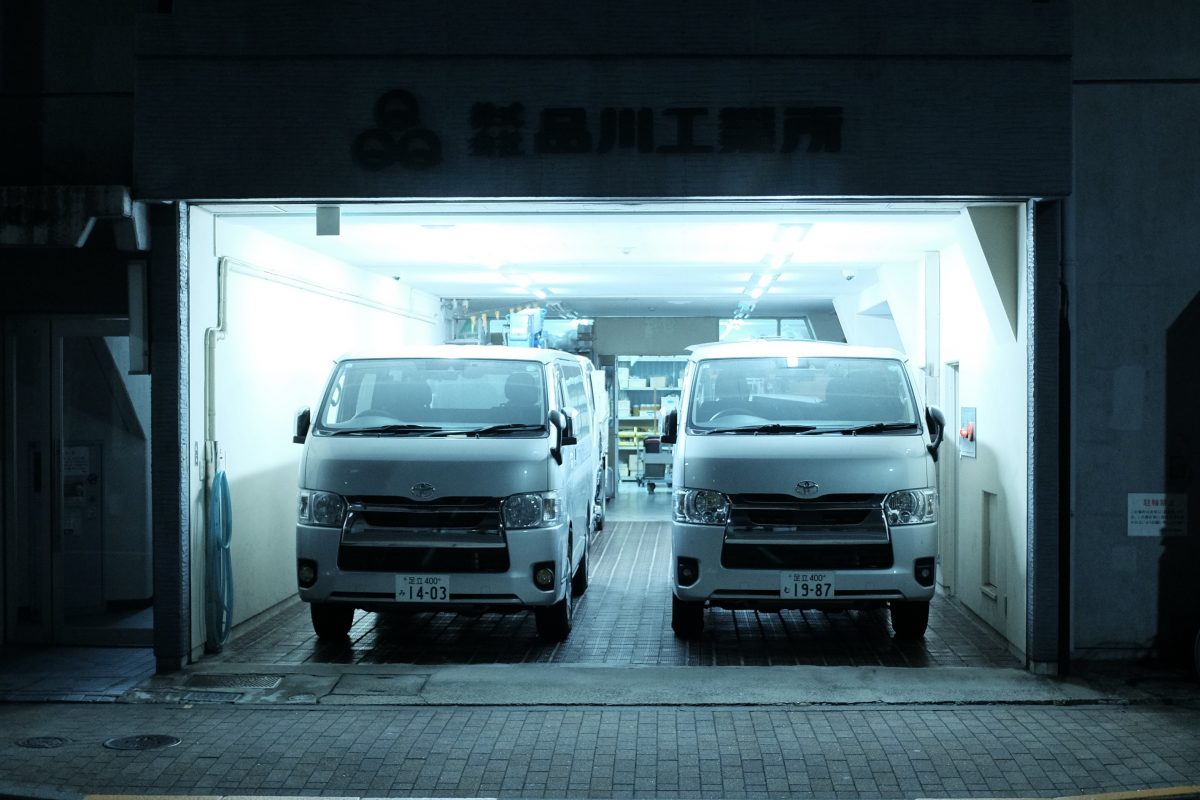
Construction workers dealing with a late night job. All the men from subway drivers to couriers to construction workers have colourful and stylish uniforms. It always makes me think of Lego men.


Akihabara at night. There are many city scapes in Tokyo where you can see all modes of movement mashed together and moving fluidly. Trains, cars, people, bicycles, buses.

Beauty is everywhere:
My overall impression of Tokyo, the largest city in the world with a population of 41 million, is that it is quiet and peaceful. I am sure that it is not without its flaws, but from my point of view, it just works. Japanese society in general seems to value harmony. People are patient with each other. They approach others with respect and understanding. And kindness. I was walking around with my backpack open and the cashier at the grocery store turned me around and zipped it up for me with a smile. My daughter dropped a 5 yen coin under a table at another store and a teenage girl squatted down to pick it up for her. This city is absolutely overrun with tourists but most shopkeepers and people in the street are incredibly patient. More than I could ever be! This makes it an easy and comfortable place to visit and I have really enjoyed my time here.
What strikes me the most about Tokyo is that everywhere I go, I am struck by little moments of beauty and wonder emanating from the most ordinary things. There are a few in previous posts and here are a couple more:



Shibuya Scramble Crossing
There are thousands of great pictures of Shibuya Scramble Crossing from above so I wanted to do something a little different. I set up my camera so that it would focus on anything 2 to 5 meters in front of me. Walking through the crowd with my camera against my body, I shot many frames without looking through the camera. The result is a random assortment of crooked and out of focus photos but also a few fun candid shots. They look cinematic to me, almost like movie stills. I like black and white for people photos.
Here is a video I made of Shibuya Crossing with my iPhone today…it is not even that busy, it gets much thicker than this.
These are the best of the pictures:








Meguro Parasitological Museum
The Meguro Parasitological Museum is a private research facility that was established in 1953. The free admission museum exhibits about 300 parasite specimens and related material. On display are a number of animal parasites and also human parasites. These are real parasites removed from hosts and preserved. There are so many and they are so BIG! There were also several gruesome photos of humans and their parasites but I won’t put them up here. Go see for yourself 😮.









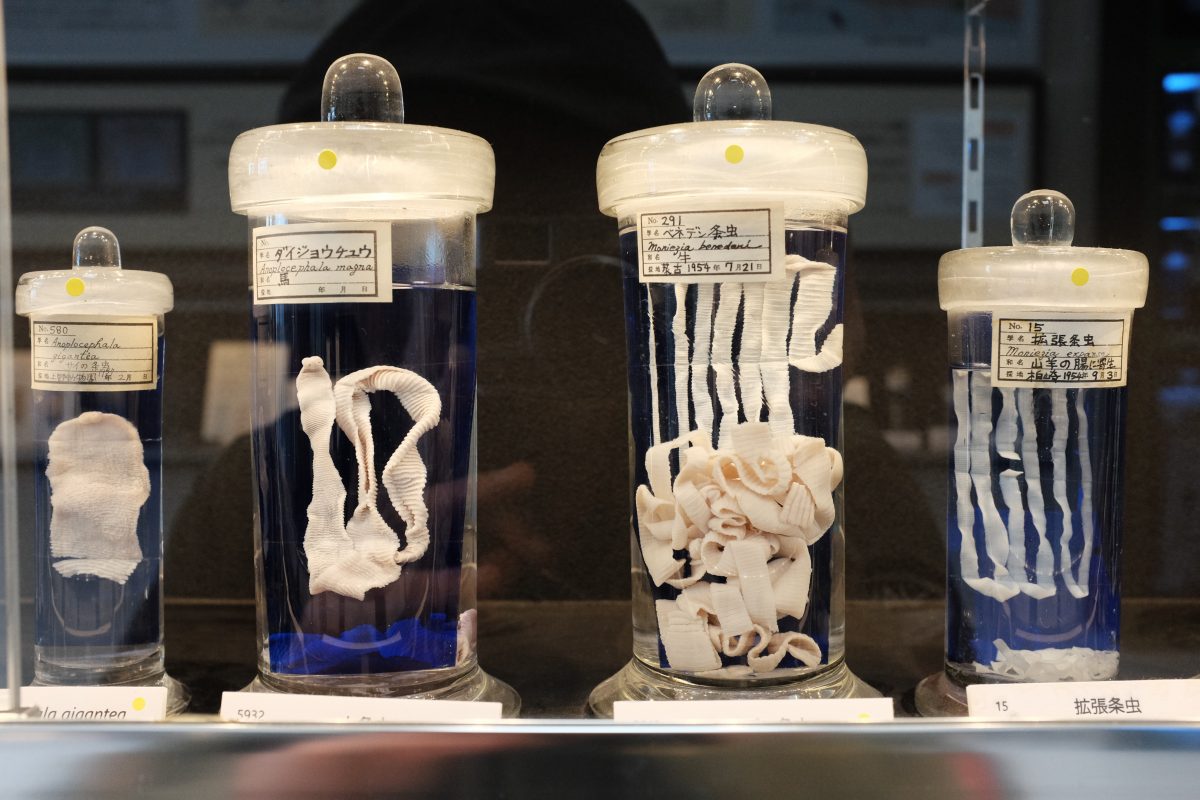



How did we even know there was a Meguro Parasitological Museum? My daughter is a fan of Nekojiru manga. The Nekojiru pieces below are about her visit to the parasite museum in the late 90’s. Credit for translations to Read Nekojiru.


This was a fascinating museum. It was cool (and a little scary) to see actual specimens of parasites extracted from human subjects. Highly recommended.
Ueno Zoo
I went to Ueno Park to look for cherry blossoms but I was too early. There were only one or two plum trees with flowers so far. So instead I walked through the Ueno Zoo and, as usual in the afternoon, most of the animals were hiding or asleep. It was still fun to watch all the little kids running around in their cute uniforms. They were just happy to be outside in the sun. And so was I.




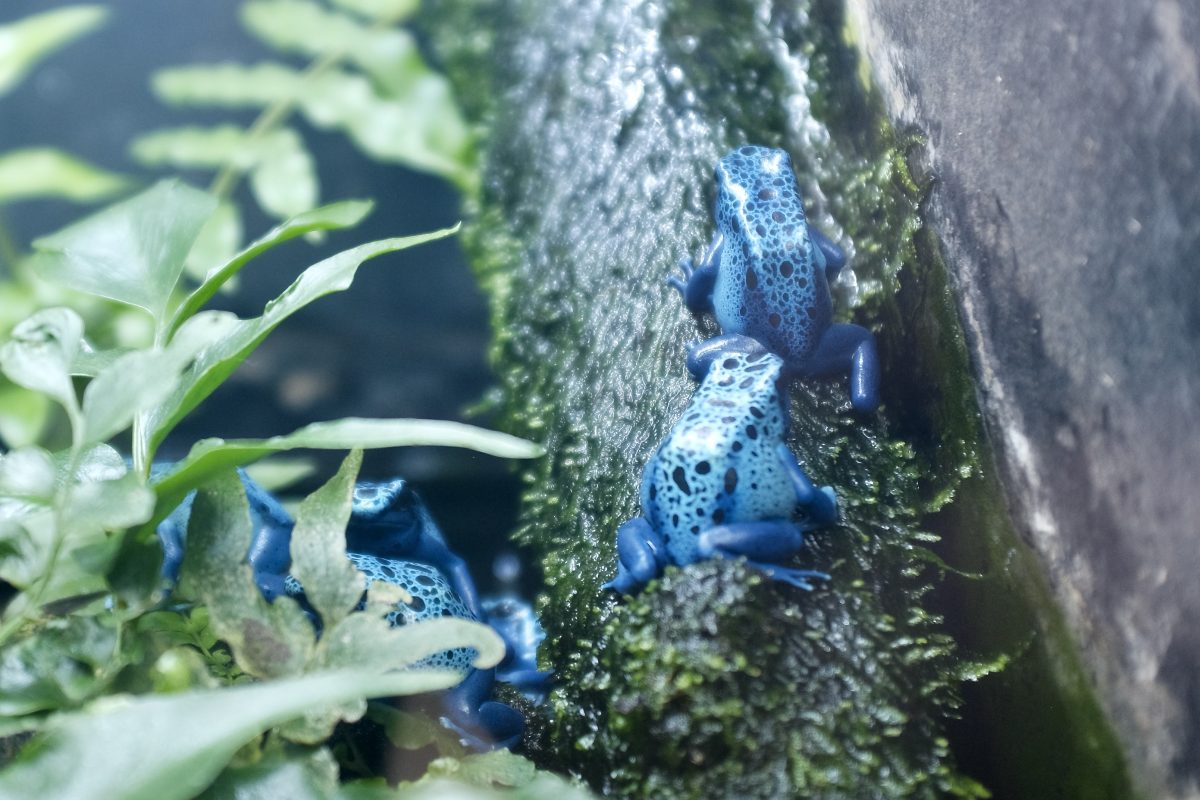
BATS!! A slow motion iPhone video.
.
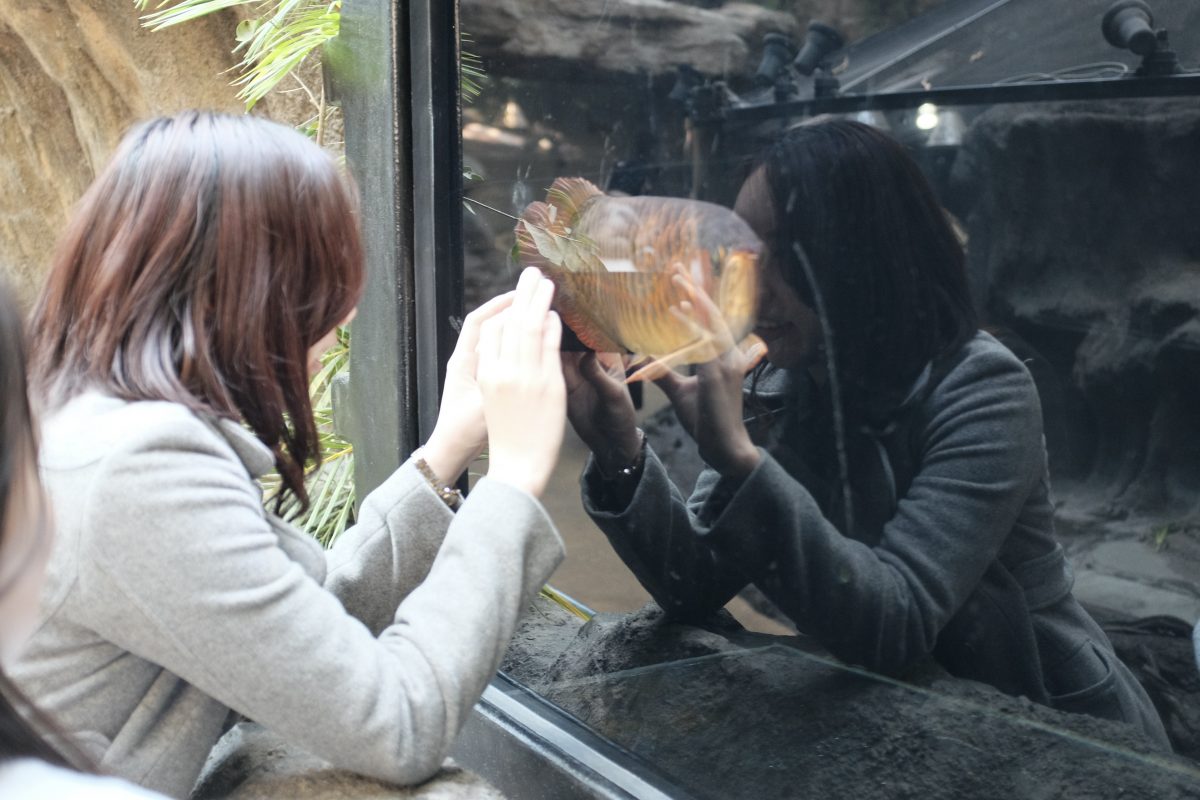

Here is a link to the Ueno Zoo website in English.
Cats and Fish: Asakusa-Nekoen and Sumida Aquarium
We visited Asakusa-Nekoen rescue cat cafe near our house before going to the Sumida aquarium. Half the cats were around 15 or 16 years old and were the original cats from when the place opened. The other half were quite young and available for adoption. The person who ran the place told us that over 15 years she has had 400 cats through the place that were adopted to new homes.





Next stop was Sumida aquarium inside Tokyo Sky Tree.

My camera does not do a good job taking photos through glass but I like these ones from Sumida Aquarium. There were so many tanks of beautiful fish, fresh water and ocean.


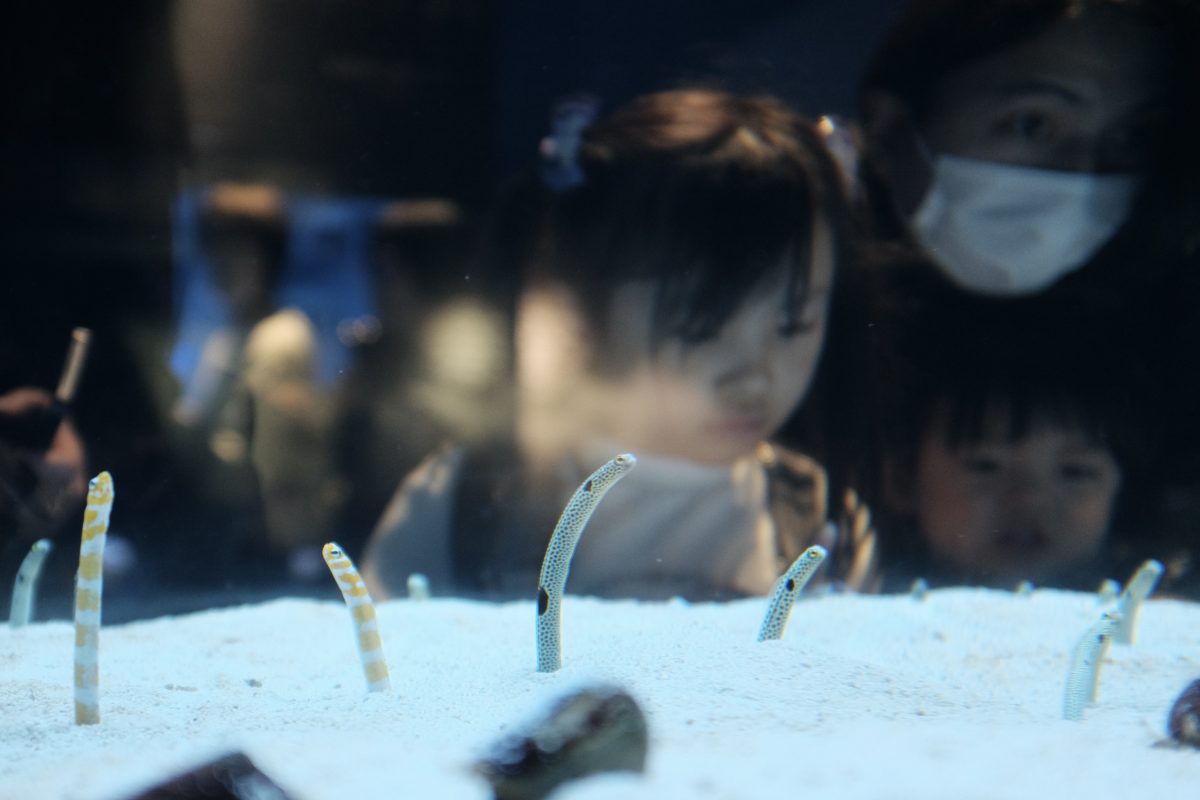



If you like visiting aquariums, there are a few pictures of the COEX aquarium in Seoul in this post.
Vending Machines of Japan
Vending machines are everywhere in Tokyo: every street corner, every dark alleyway, every train station, every parking lot. Everywhere. Sometimes they stand alone, sometimes they are in pairs, sometimes they are in gangs of three and sometimes a whole row of them line up on one side of the street and watch you go by.
There is something animate about them. After I photograph them, I remember them. When I see them again, I recognize them..it’s like that feeling of bumping into someone you have met somewhere before. They remind me of jukeboxes a little. You have a relationship with them, an agreement…you give them your coins, push the right buttons and the machine gives you what you want. At night, their bright paint and little blinking lights entice you from afar.
“How about a beer?” they ask.
Or, in their quiet understanding way they remark: “I bet you could use a cigarette right now.”
I am going to miss them.
boop beep boop beep ding-ding-ding-ding-ding
















Good night my friends..
Japanese Convenience Stores: Konbini
Japanese convenience stores are very different from their North American counterparts. On top of things like toilet paper, cup noodles and soda, they also have an enormous variety of snacks, fully cooked meals, meal prep kits to take home, and every drink you can imagine. Last time I was at 7-Eleven I even noticed plastic wrapped dress shirts and neckties in case you need one in a hurry. Underwear too! There is usually a place to sit down to eat as well as a clean public washroom. Free Wifi and foreign card ATMs are also available. Amazing. I photographed all the stores at night because I like the way their incandescent glow washes over the street and backlights the people going in and out.



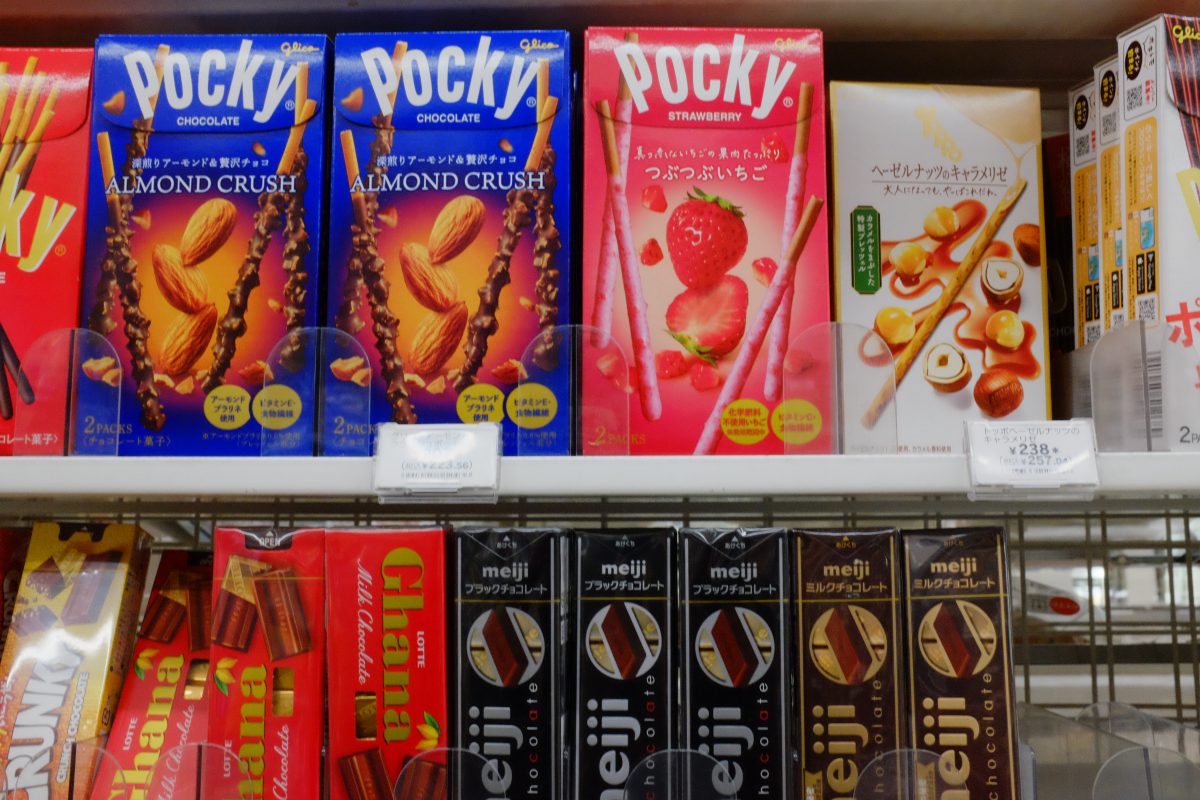




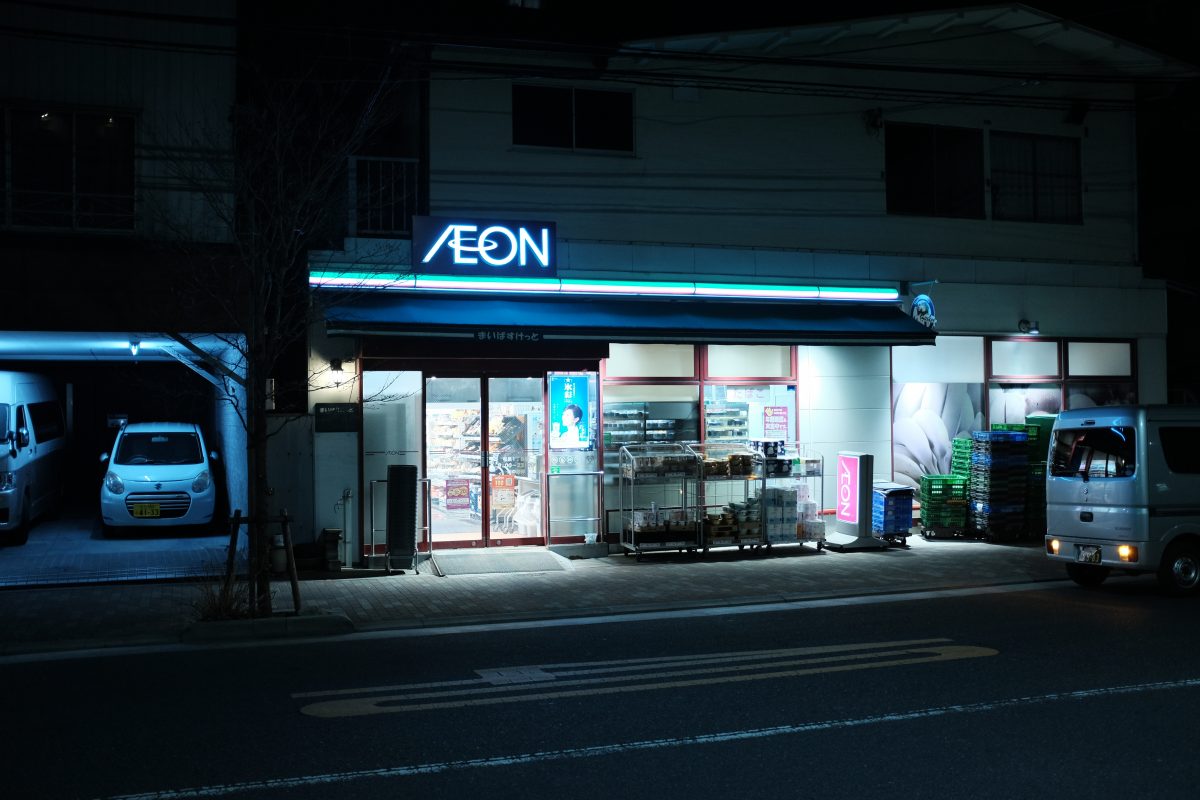



There is so much more to these places….they have EVERYTHING (except deodorant). The novelty and variety of the snacks alone is astonishing. They have no equal elsewhere.
Kappabashi Street and 食品サンプル
For as long as I can remember, my daughter has been obsessed with fake food. When we went to Ikea, she was far more interested in the rubber grapes and plastic apples in the displays than any stuffed animal or toy. So we were pretty happy to discover Kappabashi street not far from our house in Tokyo.
Kappabashi Street is home to restaurant supply stores selling everything from pots and pans to tableware and chef uniforms. But not only that. They also supply shokuhin sampuru, the plastic and rubber food that is used in restaurant window displays across the country. Everything you see below is fake. If it wasn’t wrapped in plastic, it would be hard to tell that it wasn’t real.







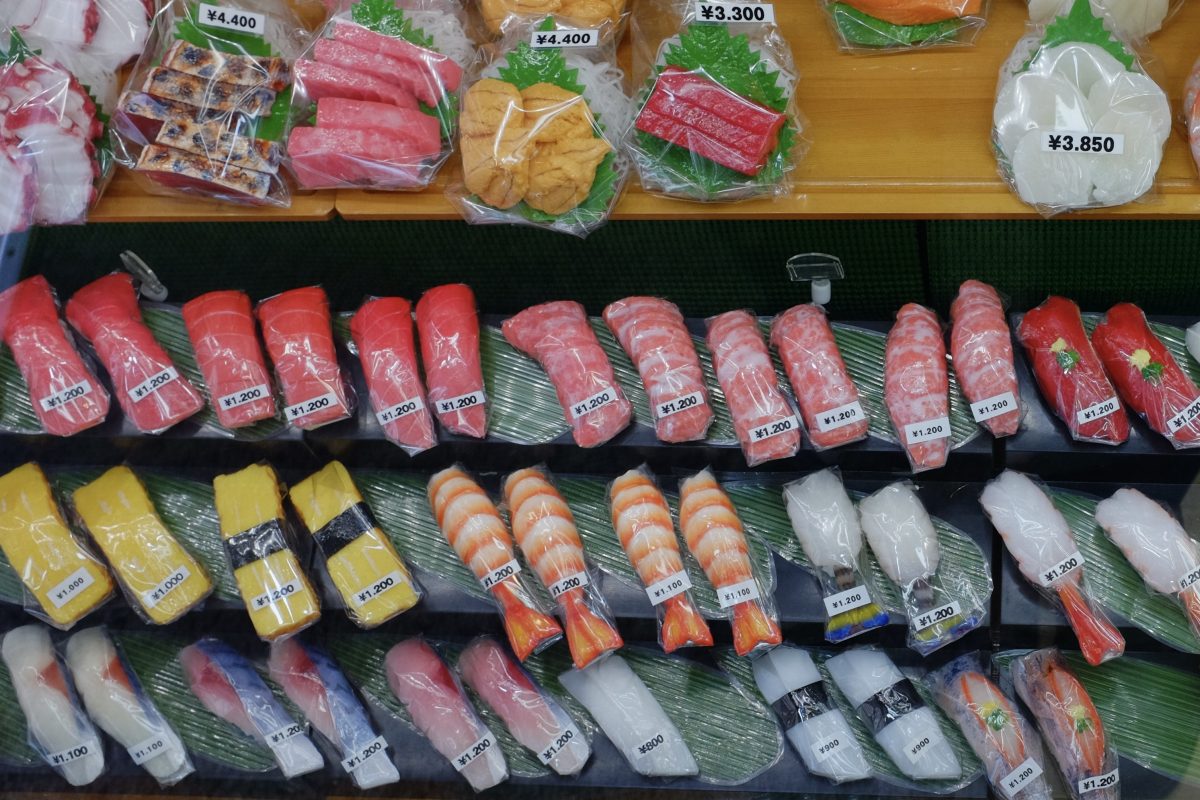
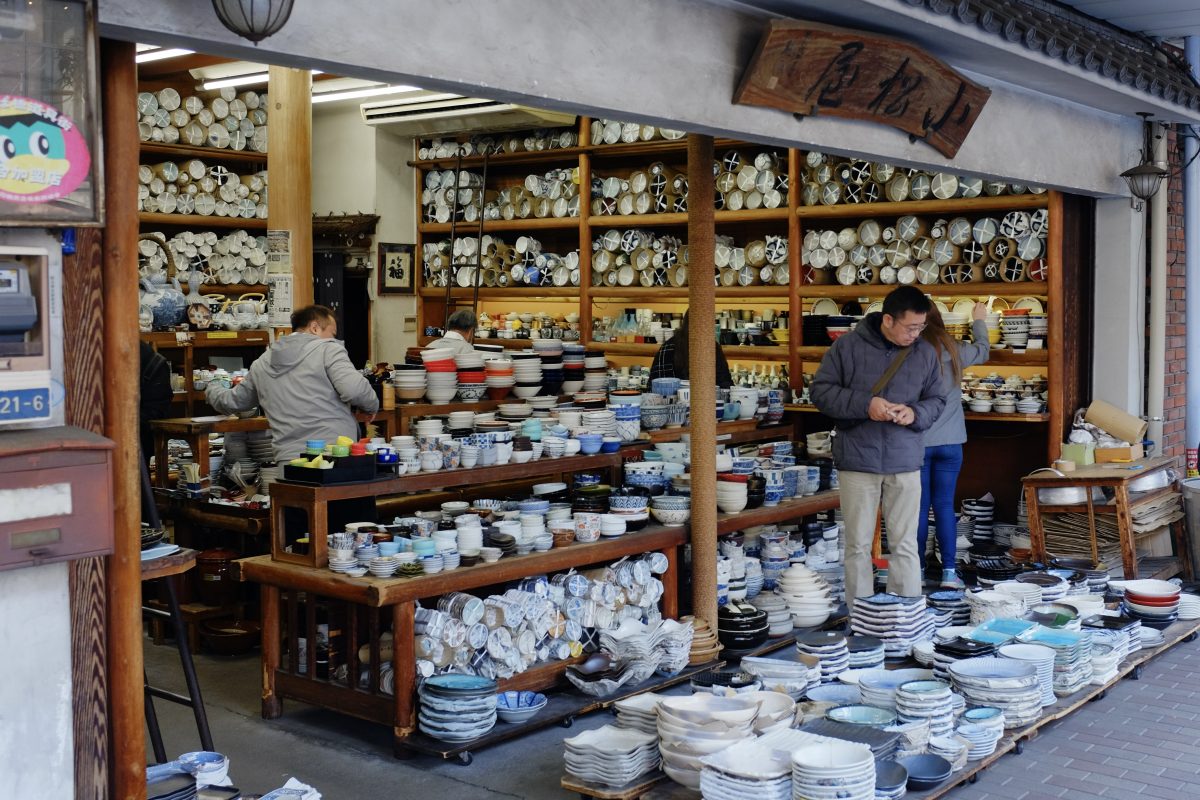


Meiji Jingu Shrine
Meiji Jingu is a Shinto shrine in Shibuya, right beside Yoyogi Park not far from Harajuku. Huge trees lean over wide walkways dappled with sunlight and shade. It is winter now so most of the gardens and ponds are still sleeping but I imagine it must be beautiful in the summer when everything is in bloom. It is a good place to have a relaxing walk away from the buzz of Tokyo.

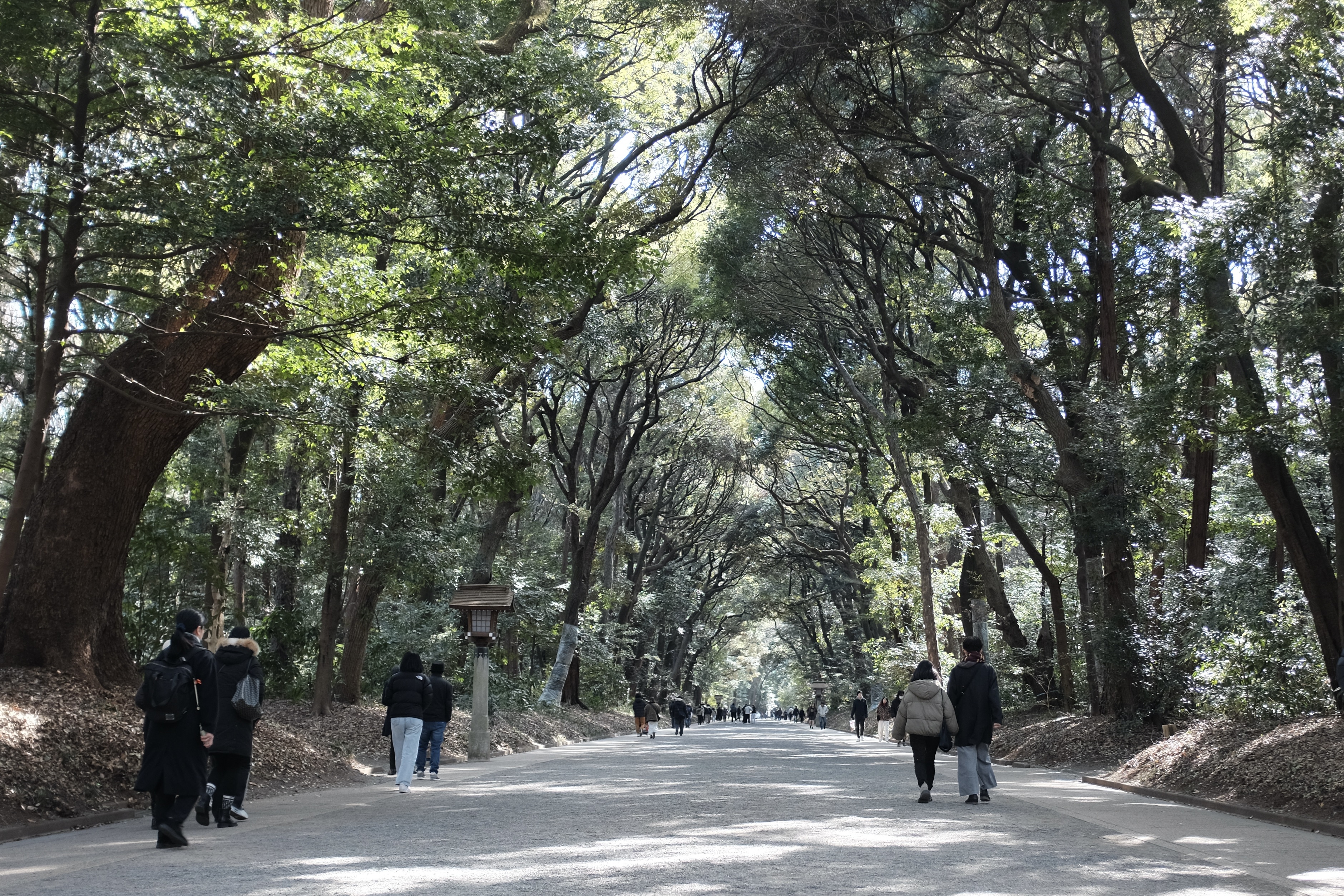






Here is a link to the official Meiji Jingu shrine website for more information.